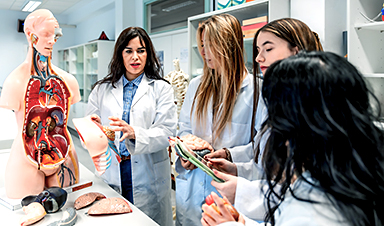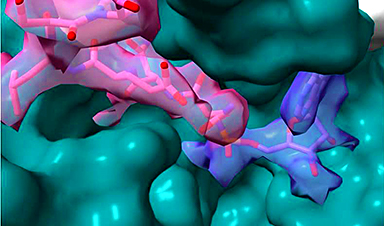‘Good’ cholesterol may be linked to an increased risk of glaucoma in individuals over 55, while, paradoxically, ‘bad’ cholesterol may be associated with a lower risk. These findings challenge conventional beliefs about factors that may help or harm eye health.
Paradoxically, “bad” (LDL) cholesterol, often associated with negative health effects, may be associated with a lower risk of developing this serious eye condition. Glaucoma damages the optic nerve and can lead to irreversible vision loss or blindness.
The findings challenge received wisdom about what may help and hinder eye health, and suggest that a rethink may be needed of how patients with high blood fats and who are at risk of glaucoma, are treated, say the researchers.
Understanding Glaucoma and Risk Factors
Glaucoma is projected to affect around 112 million people by 2040. Risk factors include age, ethnicity, the build-up of pressure within the eye (IOP), and family history, explain the researchers.
Abnormally high levels of circulating fats (lipids) in the bloodstream have been linked to eye conditions, such as macular degeneration and diabetic retinopathy. Recently published research has also implied a link with glaucoma, but the findings have been inconsistent, and it’s not clear which type of lipid might be most influential, they add.
To strengthen the evidence base, the researchers drew on 400,229 participants aged 40 to 69 in the UK Biobank Study. They had all filled in a questionnaire, been interviewed, and had undergone a standard panel of blood tests, including those to measure blood fats.
Their health was tracked for an average of 14 years, during which time 6868 (nearly 2%) of them developed glaucoma.
Compared with participants who didn’t develop glaucoma, those who did, tended to be older, and of non-White ethnicity. They had higher HDL, but lower LDL, cholesterol, and a higher waist-to-hip ratio (indicative of central obesity).
They were also more likely to be ex-smokers, and to be taking statins, and they had a higher prevalence of diabetes, high blood pressure, and cardiovascular disease.
Those with the highest level of HDL cholesterol in their bloodstream were 10% more likely to develop glaucoma than those with the lowest level, with every (standard deviation) increase associated with a 5% higher risk.
Similarly, participants with the highest levels of LDL cholesterol and triglycerides were 8% and 14%, respectively, less likely to develop glaucoma than those with the lowest levels.
And each (standard deviation) increase in LDL cholesterol, total cholesterol, and triglycerides lowered the risks by 4%, 3%, and 4%, respectively.
Age and Other Factors Influence the Findings
But these observed associations only persisted among those older than 55, with no significant association seen in those aged 40–55; the findings were also influenced by sex and type of glaucoma.
The researchers drew up a polygenic risk score—a number that provides a personalized measure of genetic susceptibility to diseases by combining genetic risk information from across the genome.
This showed that each additional genetic risk was associated with 5% higher odds of developing glaucoma. But there were no significant individual associations between LDL cholesterol, total cholesterol, or triglycerides and glaucoma.
This is an observational study, and as such, no firm conclusions can be drawn about cause and effect. And the researchers acknowledge various limitations to their findings, including that blood samples weren’t taken after fasting and only at a single time point.
The findings might also not be applicable to other ethnic groups, as UK Biobank participants are predominantly of European ancestry.
But they suggest: “These findings challenge existing paradigms about ‘good’ and ‘bad’ cholesterol in relation to eye health. This could prompt a re-evaluation of lipid management strategies in patients at risk for glaucoma.”
And they conclude: “HDL cholesterol has been regarded as the ‘good cholesterol’ for seven decades. However, this study demonstrates that high levels of [it] are not consistently associated with a favorable prognostic outcome. Further studies are needed to investigate the mechanisms behind these associations.”
Reference: “Associations between serum lipids and glaucoma: a cohort study of 400 229 UK Biobank participants” by Yiyuan Ma, Yue Wu, Leyi Hu, Wen Chen, Xinyu Zhang, Danying Zheng, Nathan Congdon, Guangming Jin and Zhenzhen Liu, 4 February 2025, British Journal of Ophthalmology.
DOI: 10.1136/bjo-2024-326062
News
Repurposed drugs could calm the immune system’s response to nanomedicine
An international study led by researchers at the University of Colorado Anschutz Medical Campus has identified a promising strategy to enhance the safety of nanomedicines, advanced therapies often used in cancer and vaccine treatments, [...]
Nano-Enhanced Hydrogel Strategies for Cartilage Repair
A recent article in Engineering describes the development of a protein-based nanocomposite hydrogel designed to deliver two therapeutic agents—dexamethasone (Dex) and kartogenin (KGN)—to support cartilage repair. The hydrogel is engineered to modulate immune responses and promote [...]
New Cancer Drug Blocks Tumors Without Debilitating Side Effects
A new drug targets RAS-PI3Kα pathways without harmful side effects. It was developed using high-performance computing and AI. A new cancer drug candidate, developed through a collaboration between Lawrence Livermore National Laboratory (LLNL), BridgeBio Oncology [...]
Scientists Are Pretty Close to Replicating the First Thing That Ever Lived
For 400 million years, a leading hypothesis claims, Earth was an “RNA World,” meaning that life must’ve first replicated from RNA before the arrival of proteins and DNA. Unfortunately, scientists have failed to find [...]
Why ‘Peniaphobia’ Is Exploding Among Young People (And Why We Should Be Concerned)
An insidious illness is taking hold among a growing proportion of young people. Little known to the general public, peniaphobia—the fear of becoming poor—is gaining ground among teens and young adults. Discover the causes [...]
Team finds flawed data in recent study relevant to coronavirus antiviral development
The COVID pandemic illustrated how urgently we need antiviral medications capable of treating coronavirus infections. To aid this effort, researchers quickly homed in on part of SARS-CoV-2's molecular structure known as the NiRAN domain—an [...]
Drug-Coated Neural Implants Reduce Immune Rejection
Summary: A new study shows that coating neural prosthetic implants with the anti-inflammatory drug dexamethasone helps reduce the body’s immune response and scar tissue formation. This strategy enhances the long-term performance and stability of electrodes [...]
Scientists discover cancer-fighting bacteria that ‘soak up’ forever chemicals in the body
A family of healthy bacteria may help 'soak up' toxic forever chemicals in the body, warding off their cancerous effects. Forever chemicals, also known as PFAS (per- and polyfluoroalkyl substances), are toxic chemicals that [...]
Johns Hopkins Researchers Uncover a New Way To Kill Cancer Cells
A new study reveals that blocking ribosomal RNA production rewires cancer cell behavior and could help treat genetically unstable tumors. Researchers at the Johns Hopkins Kimmel Cancer Center and the Department of Radiation Oncology and Molecular [...]
AI matches doctors in mapping lung tumors for radiation therapy
In radiation therapy, precision can save lives. Oncologists must carefully map the size and location of a tumor before delivering high-dose radiation to destroy cancer cells while sparing healthy tissue. But this process, called [...]
Scientists Finally “See” Key Protein That Controls Inflammation
Researchers used advanced microscopy to uncover important protein structures. For the first time, two important protein structures in the human body are being visualized, thanks in part to cutting-edge technology at the University of [...]
AI tool detects 9 types of dementia from a single brain scan
Mayo Clinic researchers have developed a new artificial intelligence (AI) tool that helps clinicians identify brain activity patterns linked to nine types of dementia, including Alzheimer's disease, using a single, widely available scan—a transformative [...]
Is plastic packaging putting more than just food on your plate?
New research reveals that common food packaging and utensils can shed microscopic plastics into our food, prompting urgent calls for stricter testing and updated regulations to protect public health. Beyond microplastics: The analysis intentionally [...]
Aging Spreads Through the Bloodstream
Summary: New research reveals that aging isn’t just a local cellular process—it can spread throughout the body via the bloodstream. A redox-sensitive protein called ReHMGB1, secreted by senescent cells, was found to trigger aging features [...]
AI and nanomedicine find rare biomarkers for prostrate cancer and atherosclerosis
Imagine a stadium packed with 75,000 fans, all wearing green and white jerseys—except one person in a solid green shirt. Finding that person would be tough. That's how hard it is for scientists to [...]
Are Pesticides Breeding the Next Pandemic? Experts Warn of Fungal Superbugs
Fungicides used in agriculture have been linked to an increase in resistance to antifungal drugs in both humans and animals. Fungal infections are on the rise, and two UC Davis infectious disease experts, Dr. George Thompson [...]





















